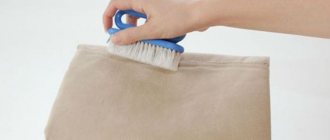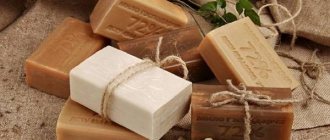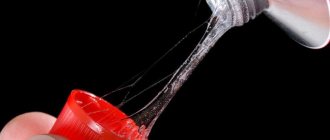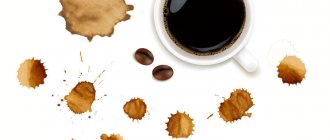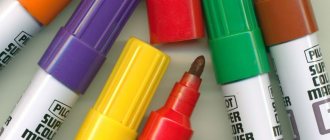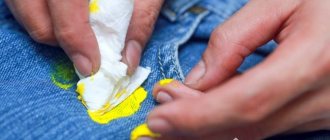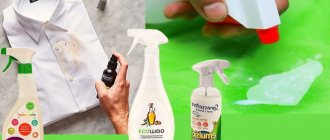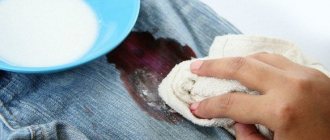Polyvinyl acetate glue or PVA glue is a synthetic glue and contains water in its base, however, in terms of adhesive strength it is no worse than its alcohol-containing analogues. If it gets on fabric, a stain of stationery PVA is easy to remove, but how to wash glue from clothing for construction or household purposes? Varieties such as Moment Joiner Super PVA, titanium or PVA Super glue are designed for more aggressive gluing, dry quickly and are quite moisture resistant. We will offer several options that will help remove even old traces of glue from clothing, while maintaining its appearance.
Methods for removing office PVA
This type of adhesive is the easiest to remove from fabric, especially if taken quickly. A newly placed PVA stain will come off quickly if you wash it right away.
Before soaking the item in warm water and adding detergent, hold the stained area under the tap and rinse it by hand.
Next, wash your clothes as usual, paying attention to the problem area.
It happens that it is not possible to remove the stain immediately or you did not immediately notice it. And how to wash off PVA glue in this case? First, the dried adhesive should be dissolved. This can be done using alcohol-based products or vinegar.
When using any solvent, first test it from the reverse side on an inconspicuous area of the fabric, otherwise the fibers may be deformed or the paint will be washed off. After making sure that the fabric is stable, proceed with the stain removal process as follows:
- To begin, scrape the frozen PVA from clothing with a blunt metal or wooden object, if the type of fabric allows such manipulations (for example, jeans);
- If the first option does not work, use soda: dip a damp sponge in soda and gently rub the glue stain, then rinse with warm water;
- Then apply vinegar solution, alcohol or vodka to a cotton pad, rub the stain and leave for 30 minutes;
- Next, you need to wash the area using dishwashing gel, laundry soap or powder;
- Wash the entire item.
How to remove superglue from your hands
If glue gets on the skin of your hands, you must immediately clean the skin. The substances contained in the composition have a toxic effect on the epidermis. To begin, lather the skin of your hands with laundry soap and leave to act for a couple of minutes. To enhance the effect of soap, you can use a scrub or alcohol-containing tonic before applying it. The acrylic film begins to deteriorate and peel off from the skin.
You can try cleaning your fingers with vodka. If the area of contamination is small (for example, fingers), the fingers are dipped in a glass of vodka for a few minutes. The glue will gradually come off.
Baking soda has an effective effect in combating traces of glue. It is applied to the skin and rubbed in with massaging movements. A dry white film forms in place of the glue, which is easily separated from the skin.
A good proven superglue remover is Vaseline. It is rubbed onto the affected area and left for 5 minutes. Then the Vaseline is washed off with the remaining glue under running water. If you don't have Vaseline on hand, hand creams or lip balm will do. As a rule, they contain petroleum jelly.
Vegetable oil helps clean your hands from traces of caustic substances. Apply a few drops of oil to a cotton swab and rub into the skin for 5 minutes. After a few minutes, the glue begins to peel off from the skin and is removed without a trace. Instead of vegetable oil, any cosmetic oils are suitable: almond, peach, wheat germ oil. These oils will not only help get rid of glue, but also moisturize the skin of your hands.
If superglue has managed to be well absorbed into the skin, then resort to mechanical cleaning. The procedure is performed carefully so as not to injure the skin. For mechanical cleaning, a pumice stone or nail file is suitable. Carefully remove any remaining glue using a tool. This method works 100%, but harms the upper layer of the epidermis and is used in desperate cases. After removing superglue from the surface of the skin, be sure to wash your hands with soap and moisturize with nourishing cream.
Unconventional methods for removing construction PVA
Super PVA construction adhesive (PVA-M), PVA dispersion, Moment Stolyar Super PVA have increased adhesion and, when contacted with fabric, stick very firmly.
There are several unconventional methods that can be used to remove traces of adhesive.
The first option is to place the contaminated clothing in the freezer. At low temperatures, the PVA will harden and can be removed with a knife. After this, you should wash the item in warm water, adding powder and 1 tsp. soda
Another option is to expose the stain to high temperature. To do this, you can use hot air from a hairdryer, steam or an iron. It is worth placing a white cloth or napkin on the surface of the contaminated area to absorb the glue that has melted from the heat. It is also worth putting material on the wrong side. When the substance is absorbed into the flap, the remaining traces are erased in the usual way.
Another way to remove glue from clothes involves using a hammer. It is used in case of a large stain with a large amount of adhesive. The bottom line is this: a napkin is applied to the stained area on both sides, the clothing is placed on a hard, flat surface, and the dried stain must be broken with a hammer, constantly removing flying pieces so as not to damage the fabric. Then the item should be washed in warm water.
And finally, exposure to a chemical agent.
Purified gasoline, acetone, and turpentine have a very aggressive effect on fabric and should be used with great caution in cases where other means have not helped.
Before using solvents, arm yourself with gloves; due to toxicity, do not bring your hands close to your face; ventilate the room.
Methods for washing items with silicate glue stains
This glue has a second name among the people, which fully reflects its main characteristics - “liquid glass”. And all because it has the same transparency as glass, and at the same time reliably fixes the parts of objects to be glued together. The first aid in removing stains will be ordinary laundry soap. First, soak the soiled clothes in water for 4 hours. After some time, rub the problem area with laundry soap. If the fabric is quite strong, then we enhance the effect with a brush. Next, rinse in clean water.
How to Remove Other Types of Synthetic Glue
In addition to PVA, synthetic glues include Moment, Super Glue, and Titan. They are the most toxic, frost-resistant and moisture-resistant.
To remove traces of the Moment, you should start with the most gentle methods. Since the purpose of the adhesive is different, companies produce Moment with different chemical compositions. Therefore, first you should try to simply remove the film of the dried product. If you can’t get Moment off your clothes, you should soak the item in high-temperature water. If there is no effect, select one of the products (thinner 646, gasoline, kerosene, white spirit, acetone), then:
- Place a few drops of the product on the material;
- Apply to the stain for half an hour, lightly rubbing the stained area;
- Use a brush to clean the torque marks;
- Wash the item with citric acid or vinegar to get rid of the solvent smell.
Titanium glue is a fairly popular polymer product that is used for gluing ceramics, glass, and paper. To remove traces of titanium composition, use the hammer impact method. After breaking up the stuck product, the item should be washed in a soapy solution.
When you need to quickly and reliably glue objects, many people use Super Glue. It can be very difficult to remove a stain of cyanoacrylate acid, which is its basis, from clothing. Sometimes you can take a chance and purchase chemical liquids that remove such traces, for example, dimethyl sulfoxide solvent based on nitromethane, “Super Moment Anti-Glue” and others.
For fear of spoiling the thing, you can use such means as:
- Refined gasoline;
- Vinegar;
- White Spirit;
- Dimexide solution.
Anti-inflammatory medicine can be purchased at a pharmacy. After pouring dimexide onto a napkin, apply it to the contaminated fabric, wait until the Super Glue dissolves, then wash the item in warm water.
Another method for removing traces of Super Glue from clothes is to use oil-based products (vaseline, glycerin, butter). After wetting the napkin with this product, first remove the remaining adhesive. After this, it is necessary to remove the remaining greasy stain with dishwashing detergent or stain remover.
To remove Super Glue stains from white clothes, you can use bleach or bleach.
In addition to all the listed products, in construction departments, you can buy special liquids that remove glue from clothes. You can use Secunda, Anti-glue Super Moment, Contact. Such compositions should first be applied to an inconspicuous area of the item, and only then to the stain. They are very effective against PVA adhesive, moment, and super glue.
Universal means
Universal products used to remove office glue, office glue, and silicone glue from clothing include vegetable oil. For more aggressive products (super glue or Moment), it is recommended to use stronger substances and solvents, anti-glue agents and others. When removing traces of glue from clothing, you should follow several basic rules:
- The glue is wiped off from clothes immediately after it gets on the fabric. The older the stain, the more difficult it is to get rid of. Fresh stains can be removed easily. Stains left on the surface of the material several days ago or more run the risk of not being removed at all;
- When removing different types of contaminants, it is advisable to use different products specially developed or found for this type of adhesive. The fact is that using universal products, there is a chance to remove dirt from clothes, but it is minimal;
- The more versatile the product, the more gentle and delicate it is. Such products are not suitable for removing more aggressive adhesives;
- You should focus on the clothing that got glue on it. When removing stains from denim with alcohol, white spots may remain. Detergents used to remove stains may dissolve synthetic fibers. Substances used to cleanse dirt from white clothes will remove not only dirt, but also color from colored ones;
- If after the operation the glue residues are only partially removed, it is advisable to repeat the procedure after the item has completely dried. Excessive exposure to aggressive materials can have a negative effect on the fabric.
Removing PVA from different types of fabric
The task of removing stains of PVA glue or other compounds is complicated by the fact that it is impossible to use a certain method for any fabric.
You should take into account the material from which the clothing is made, and only then choose a product to remove the stain.
PVA can be removed from linen or cotton fabric with alcohol. Denim clothing can easily withstand treatment with nail polish remover or gasoline. A suede item should first be exposed to hot air or steam, and then remove traces with ammonia.
For delicate fabrics and silk, the solvent is very dangerous, so in this case the freezer will come to the rescue, in which you should keep the item for about two hours, then remove the adhesive with a nail file. Or mix vinegar and ammonia in equal quantities and rub the contaminated area with this solution.
A stain left on a woolen item can be removed with 20 g dissolved in 100 ml of water. citric acid. After applying this product to the fabric, the item should be washed.
When a PVA stain is placed on a fur item, you should use a simple soap solution. To restore its former shine, treat the fur with vinegar water.
If these methods did not lead to the desired result, or after active manipulation the fabric was damaged, save the situation with an original patch or sticker. With a quick response, the item can still be washed.
Reasons for the appearance of glue stains on wallpaper
Unfortunately, it is not always possible to avoid such a problem as the appearance of glue stains on the surface of the wallpaper. Stains can occur if, before gluing, the wall was not properly prepared for the new coating, that is, glue residues from previous paintings were not removed. In the case of plasterboard walls, complete puttying is required. Also, putty is indispensable if the wall has lime stains. This substance can react with wallpaper glue and cause yellow spots on the finished covering that cannot be removed in any way.
The walls must be completely ready for wallpapering, that is, covered with a primer and puttied. It is imperative to wait for the applied ready-made solutions to dry completely, so that stains and unnecessary smudges do not appear in the future. Sometimes a situation may arise that results in a reaction of an old, not completely removed substance with a new one. To prevent this from happening, the walls must be cleaned as thoroughly as possible from the old coating.
When covering a room with non-woven wallpaper, only the walls need to be covered with diluted glue; the canvases do not need this. This way, the wallpaper will adhere tightly to the surface and there will be no excess adhesive.
Usually, if the canvas does not stick well and begins to peel off, many people add more glue. But the point here, most likely, is a violation of the dilution technology, and not how much glue is on the sheet. Prepare the glue strictly according to the instructions from the package in slightly warm water, all lumps must be thoroughly mixed. The diluted glue is left to swell for several minutes. You should also not forget the fact that wallpaper glue is not stored for a long time, so you should not dilute it so much that it will not be possible to use it at one time. Later, its quality characteristics and adhesive qualities will no longer be the same as before.
Also, peeling wallpaper may be due to improper conditions of the room in which the renovation is taking place. Draft, direct sunlight and too low a temperature prevent the glue from setting.
Advice! For measured application, it is best to use a brush with a wide base and natural bristles.
